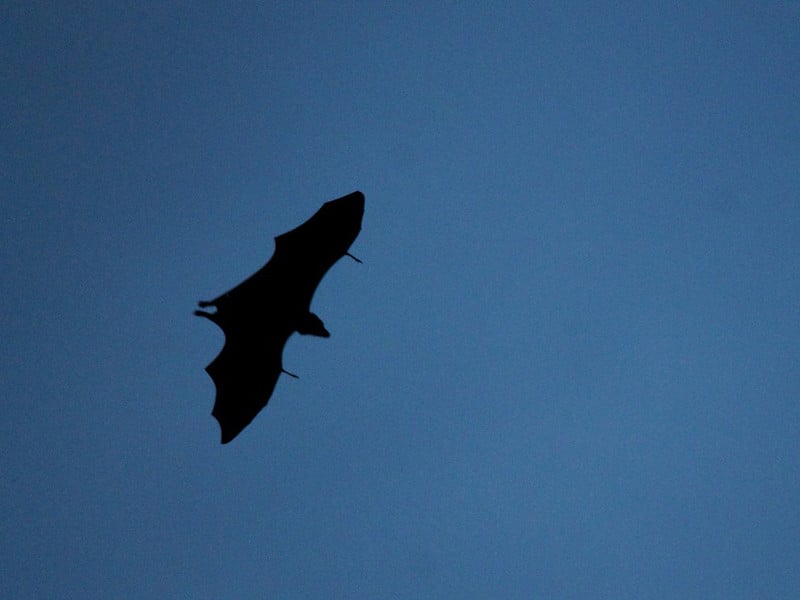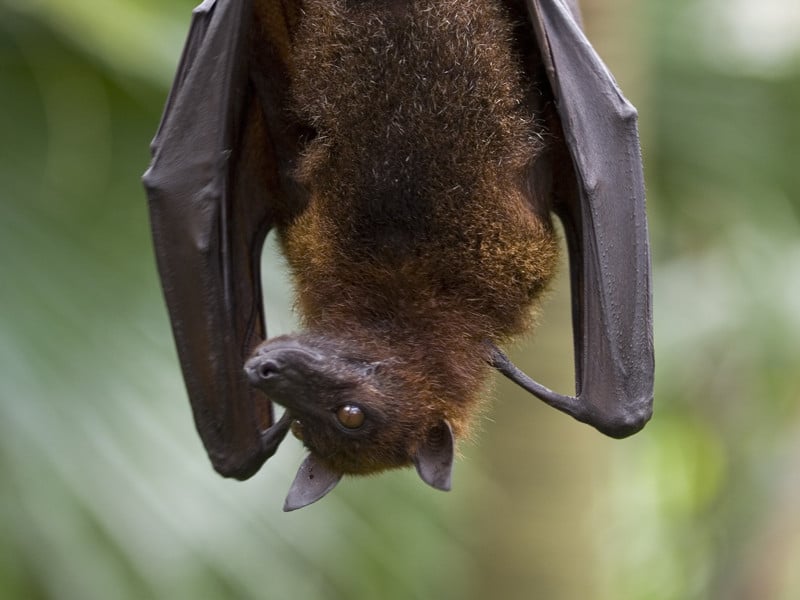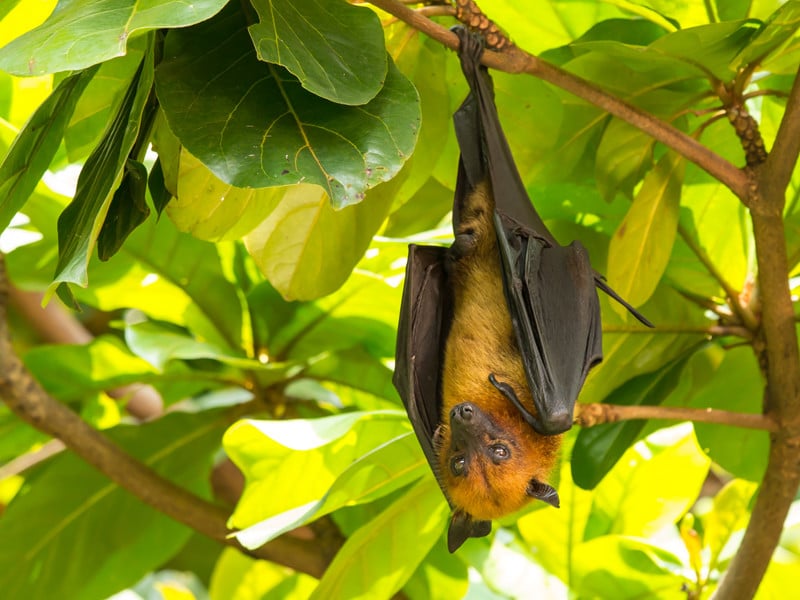Kitti’s Hog-Nosed Bat – Craseonycteris thonglongyai
Description
The Kitti’s Hog-Nosed Bat has a very unique look to it. The fact that is so tiny also encourages the other name it is frequently called by – Bumblebee Bat. It is the smallest of all the species of bats that are in the world and it is also one of the smallest mammals in the world.
It weighs less than ¼ of an ounce and is approximately an inch in length. The ears are large when you consider the small size of the rest of the body. They do have a tail but many people don’t think so. However, it is just so tiny that it is hard to see. They have long wings and many people wonder how they are able to fly!
It is the smallest of all the species of bats that are in the world.
The coloring of this bat is different from others. The Kitti’s Hog-Nosed Bat has a red or gray coloring to it rather than black. As the name indicates, it has a snout that is similar to that of a hog. It is quite an interesting looking creature!
Anatomy
The Kitti’s Hog-Nosed Bat has a strange body design to say the least. Many experts have long wondered how it is able to fly with such dimensions. However, it has been determined that they have extra webbing between the hind legs. This webbing helps this species of bat to have control over their movement while in flight.
In spite of their small size, the Kitti’s Hog – Nosed Bat have very strong legs and claws. They have toes that curl and that allows them to roost with ease. They have a tendon locking mechanism that allows this posture to occur without it consuming very much energy at all.
They use echolocation to help them be able to navigate in their environment. This process involves the use of hearing that is very tuned into their environment. They send out singles and then wait for the echoes to come back to them. The length of time this takes and the volume of them tells them where the prey happens to be. They are able to create a type of map in their mind about the layout.
Evolution
We have absolutely no fossil records at all of the Kitti’s Hog – Nosed Bat which makes it very hard to fully understand what the evolution process for them has been. They do have some commonalities with various forms of bat species out there though. This is very interesting to experts due to the fact that it could indicate areas where these unique bats branched off from the rest of them.
Behavior
Most species of bats form extremely large colonies. However, the Kitti’s Hog – Nosed Bat doesn’t do so. The largest of their colonies have from 100 to 500 members. Most of them have much less and in some cases there are only about 10 of them. What is interesting is that they all use echolocation. However, they have slightly different uses of it such as sub cultures within a larger environment.
This particular species of bat was only discovered in the early 1970’s.
Another difference with the Kitti’s Hog – Nosed Bat is their spacing for roosting. They will spread out substantially while all other species of bats move very close to each other. It is believed that this species doesn’t have to rely on the body heat of each other as most species of bats do.
This particular species of bat was only discovered in the early 1970’s and there is still a great deal that we don’t know about them. Experts believe there may be more areas where the Kitti’s Hog – Nosed Bat live but that we haven’t yet identified. Though observing them as much as possible though we have made some progress about how these unique bats behave.
Habitat and Distribution
There are a limited number of areas where the Kitti’s Hog – Nosed Bat lives, so there isn’t much of a chance you will be able to see one in the wild. They are found along the Southeast part of Burma. They are also found in the West areas of Thailand. The live both along the forest areas and the limestone caves by the river. They are also found in the Sai Yok National Park.
Diet and Feeding Habits
The fact that the Kitti’s Hog – Nosed Bat lives very close to the water means they are usually able to find plenty of insects that they can eat. Flies are in high supply around this area and they make up most of the diet. They also consume lots of types of spiders. What is interesting is that the Kitti’s Hog – Nosed Bat doesn’t usually stop to eat. They will typically do it while they are still in flight.
They consume flies and lots of types of spiders.
This gives them the element of surprise along the way. There are times when this species of bat is seen perched and eating but it isn’t the normal situation you will come across. They are able to catch their prey in their mouths in flight or to hold them with their tail until they stop. There are numerous bamboo and teak trees in their habitat, and they are able to fly high above them to find their sources of food.
Reproduction
Mating for the Kitti’s Hog – Nosed Bat takes place as the winter ends. By the spring time the females are ready to have a single youngster. They are extremely small when they are born. They will be attached to the body of the mother around the waist, even when she is out feeding. As they get too large they will start to be left at the roost. It can be several months before their wings are mature enough for them to fly and find their own food.
The Kitti’s Hog – Nosed Bat was a very slow rate or producing new offspring, and this is a serious problem for their future. Experts are trying to find out more about the age where these bats mature, mating rituals, and more so that they can try to get them to reproduce faster in captivity. However, it is hard to study them in the natural environment. With them being so small it is also hard to tell those that are mature for mating and those that are still too young.
Predators
Due to the small size of the Kitti’s Hog – Nosed Bat there are many different predators that they have to try to avoid. This includes birds, snakes, squirrels, and cats.
Main natural predators: birds, snakes, squirrels, and cats.
Humans tend to capture the Kitti’s Hog – Nosed Bat as they are fascinated by their small size. They aren’t fearful of them like with so many different types of bat species. Humans have been associated with exposing the natural environment of these creatures to different chemicals and bacteria. As a result, large numbers of them have been wiped out in no time at all.
When humans go exploring through the natural environment of these bats, it also causes them a great deal of stress and confusion. When that happens they may not eat and they may not mate. There are monks in these regions of Thailand that go to the locations where the Kitti’s Hog – Nosed Bat live. They meditate there without realizing the problems they are creating for these delicate creatures.







